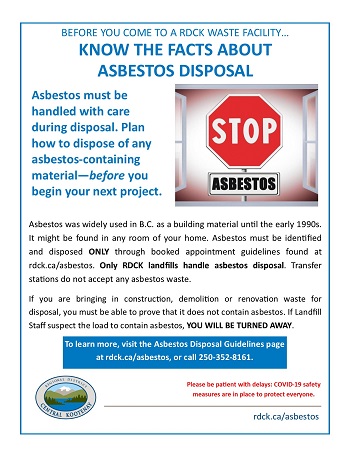The 20-Second Trick For Asbestos Removal
Table of ContentsAsbestos Removal Can Be Fun For AnyoneAn Unbiased View of Asbestos RemovalIndicators on Asbestos Removal You Should KnowFacts About Asbestos Removal RevealedRumored Buzz on Asbestos Removal

In all Type 1 operations, the spread of dust from the work area must be controlled by the use of drop sheets of polyethylene or other appropriate product, or by other procedures defined in section 14 of the Guideline. Friable ACM that is not fallen apart, crushed or powdered which may be disturbed or eliminated during the work must be thoroughly wetted prior to the work begins and need to be kept damp throughout the work.
In Type 2 operations including the elimination of all or part of an incorrect ceiling where ACM is likely to be on the surface area of the ceiling and the elimination or disturbance of one square metre or less of friable ACM, the mechanical ventilation system serving the work area need to be handicapped and all openings or voids, including ventilation ducts, should be sealed (Asbestos Removal).
All About Asbestos Removal
Where proper, the spread of dust should be controlled by procedures suitable to the work, including the usage of drop sheets or other appropriate product made of material that is resistant to asbestos When it comes to Type 2 operations including work above a false ceiling or work involving the removal or disturbance of one square metre or less of friable ACM, the work area need to likewise be surrounded by an enclosure made of polyethylene or other ideal product invulnerable to asbestos, where practicable.
Glove bags serve to control asbestos dust and waste at the source by consisting of the wetted ACM during the removal and by including the waste - Asbestos Removal. Surface areas below a glove bag operation should also be covered with a drop sheet. Source: Building Safety Association of Ontario The Policy needs that, prior to ACM is removed indoors, the workspace should be confined and a decontamination facility established, as explained formerly.
The friable ACM should be completely wetted and kept damp throughout the elimination, unless this would create a danger or cause damage. Dust and waste should also be kept damp if practicable. The Regulation needs that a qualified worker inspect the work location at the start of each shift, at the end of each shift, unless the next shift starts instantly, and at least once on days when there are no shifts.
What Does Asbestos Removal Do?
In some Type 3 operations, unless the my website structure will be demolished and will only be gotten in by asbestos reduction and demolition employees, the spread of dust from the work location should be prevented by keeping an unfavorable atmospheric pressure of 0. 02 inches of water relative to the location outside the work location.
The pressure difference must be determined often and at routine periods and the ventilation system utilized to keep the negative atmospheric pressure need to be examined and preserved by a competent employee before each usage. Replacement air taken from outside the enclosed area must not be contaminated with any dangerous dust, vapour, smoke fume, mist or gas.
If, throughout the course of the evaluation, the filter is found to be harmed or defective, it needs to be changed before the ventilation system is used. The ventilation system that is utilized to keep the enclosed location at negative pressure must be inspected and kept regularly by a "competent employee" prior to each usage.
The smart Trick of Asbestos Removal That Nobody is Discussing

If the enclosure is torn, air will leak into, instead of out of the workspace. This decreases the risk of asbestos contamination outside of the enclosure. The concentration of airborne fibers in the work location will be reduced as polluted air is filtered and exhausted. The blood circulation of fresh air through the work location might assist to control temperature level and relative humidity inside the enclosure, perhaps improving worker comfort and lowering the threat of excessive direct exposure to heat inside the enclosure. Type 3 operations that are done on non-friable ACM using power tools that are not attached to a dust-collector geared up with browse around this site a HEPA filter need to be done in enclosures, unless the workspace is enclosed by walls. If the enclosure is made of non-transparent material, one or more transparent windows need to be contributed to the enclosure so that the entire work location can be seen from outside the enclosure.
Entrances and exits to the workspace should be fitted with plastic sheets on each side. If the work is done inside your home in a structure that will not be demolished, the area inside the enclosure should be kept at an unfavorable air pressure of 0. 02 inches of water relative to the location outside the enclosure.

Not known Details About Asbestos Removal
The requirement for clearance air screening at the end of indoor Type 3 operations including the elimination of ACM that is described in paragraphs 1, 2, 3, 4, and 6 of subsection 12( 4) makes sure that workers who go into the area following the removal are not exposed useful source to asbestos fibres. Type 1 operations need managing the spread of dust through proper measures consisting of making use of drop sheets that are impervious to asbestos.